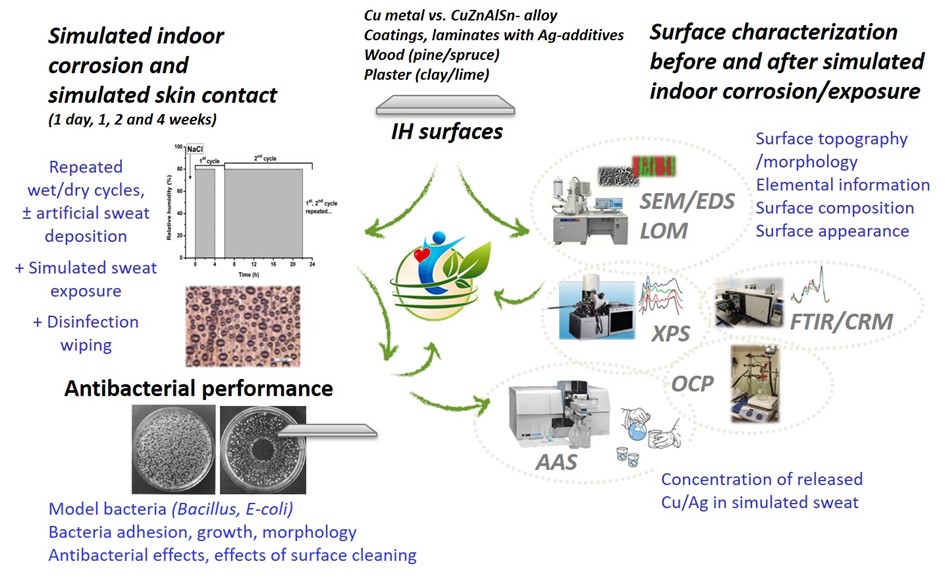




In different public indoor environments, cross-contamination by hands may pose the greatest infection risks (e.g. healthcare-associated infection, HAI) — with contamination of the high-touch surfaces by microorganisms. Further, high-touch surfaces used in indoor settings need to retain their antimicrobial properties even when tarnished, degraded and/or cleaned.
Feasibility studies on the relation between differently tarnished high-touch materials and their antimicrobial properties and effects of different cleaning agents were done (2019-2021) at KTH Royal Institute of Technology Stockholm, Sweden (KTH). Results from the feasibility investigations will be published in scientific peer-reviewed articles during 2020 or 2021, and when published, they will be added also to this page. The aims of the feasibility studies within the IHMEC program were to develop a reproducible method able to mimic real conditions of indoor atmospheric exposures and fingerprint contact of high touch surfaces. The methodology, which was employed to assess antimicrobial properties of different indoor hygiene (IH) product surfaces, included wet/dry cyclic exposures combined with spray deposition of artificial sweat (ASW). Read more about the methodology here.
After weathering the surfaces, the antimicrobial properties were studied by introducing model bacteria strains (E-coli, Bacillus) onto the surfaces via artificial sweat droplets. The general research approach is schematically illustrated in the Figure 1 below.

In the study, Cu and Cu5Zn5Al1Sn (Golden alloy) were used as benchmark surfaces. The samples supplied from the participating companies included laminates and coatings containing silver phosphate glass as well as wooden surfaces (pine, spruce, larch, Thermo wood) and plaster (clay, lime). The results stress the importance of both physical and chemical properties of high-touch surfaces, such as surface roughness, surface wettability, surface composition, chemical reactivity, tarnishing/corrosion, as well as the extent of the metal release, for an improved understanding of the antimicrobial characteristics.
Chang, M. et al. A novel methodology to study antimicrobial properties of high-touch surfaces used for indoor hygiene applications—A study on Cu metal. PLoS ONE. 2021, 16(2): e0247081. https://doi.org/10.1371/journal.pone.0247081
Chang, T. et al. The interplay between atmospheric corrosion and antimicrobial efficiency of Cu and Cu5Zn5Al1Sn during simulated high-touch conditions. Corrosion Science. 2021, 185: 109433. https://doi.org/10.1016/j.corsci.2021.109433